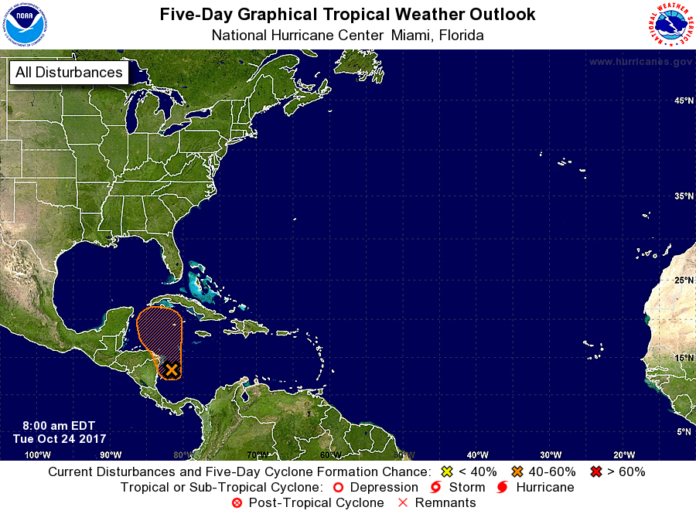HARLINGEN — A sloppy area of showers and low pressure east of Nicaragua has about a 50-percent chance of developing into a more defined tropical system, National Weather Service forecasters said yesterday.
The area, referred to as Invest 93, is close to land in the western Caribbean which will slow any development. But the general motion of the low pressure area for now is a slow drift north toward the central Gulf of Mexico.
“At this point, it doesn’t really pose any threat to the Valley,” said Tim Speece, a meteorologist with the National Weather Service in Brownsville. “But there is the potential it could turn into a named storm over the next five days.”
High water temperatures south of Cuba and a moist atmosphere are conducive to tropical development, forecasters say.
If the weather area develops and becomes a tropical system, it will be named Tropical Storm Philippe.
“What’s happening is that the weather pattern over us has shifted into sort of a cooler, autumn pattern, and we’re finally starting to get our autumn cold fronts moving down the central and eastern portions of the country,” Speece said.
Those cold fronts are likely to drive any tropical system which forms in the Gulf of Mexico or the Caribbean to the east, away from the Texas coast.
Speece said the long-range tropical system forecast for Invest 93 shows that, if it indeed does develop into a stronger and more defined system, the threat would be to Cuba and points east.
“We’ve been talking about it with folks, and it’s got some potential threat to Cuba, Florida and the Bahamas area, and like I said the long-range models show it basically running up parallel to the east coast of the U.S.
“It could turn into a pretty significant storm there for the east coast and the southeastern states,” Speece added.
The chance of formation into a more defined tropical system over the next 48 hours is low, at about 10 percent. However, over the course of the next five days, the area has a formation chance regarded as medium, or about 50 percent, forecasters say.





